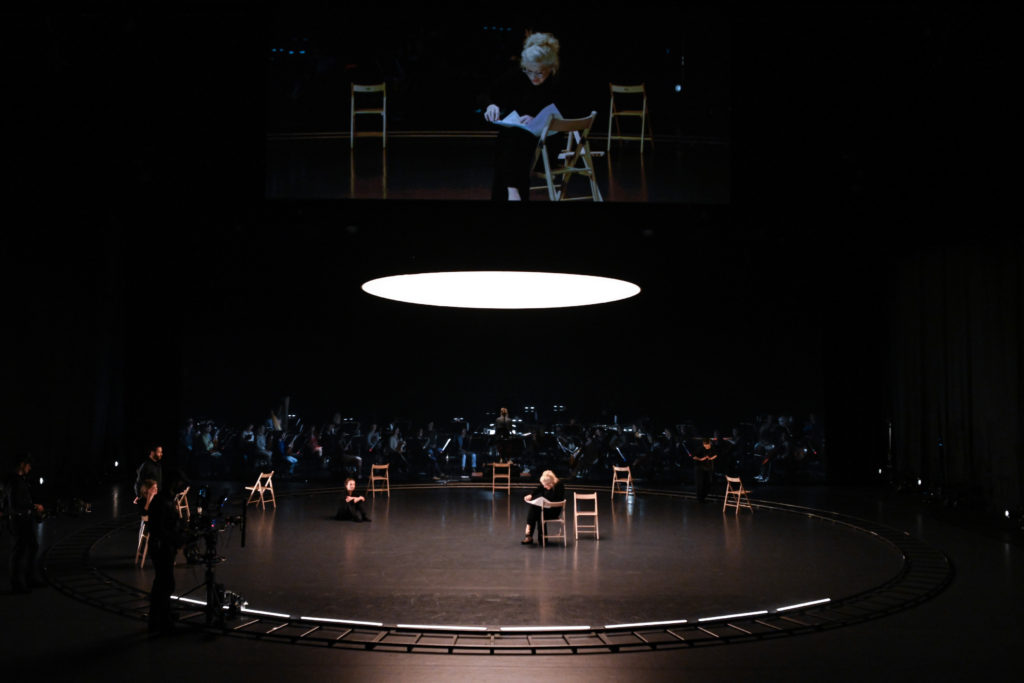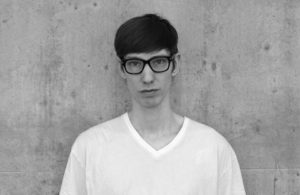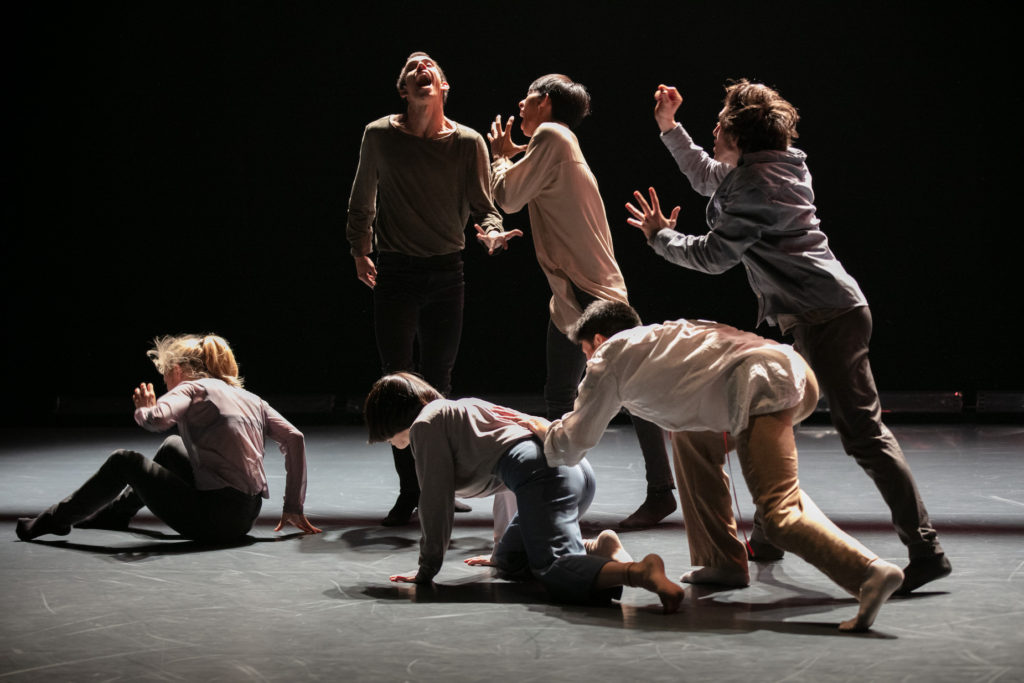Two by Øyen: The American Moth and Story, story, die - Vancouver Ballet Society
- Home
- Features 2020 - 2023
- Two by Øyen: The American Moth and Story, story, die

By Veronica Posth
Alan Lucien Øyen, a Norwegian director and choreographer, tackles human dualities and contradictions through narrative works that are often a combination of fiction and reality. Frequently, his multimedia performance works are inhabited by stories that come partly from his imagination and partly from fragments of personal anecdotes shared by his dancers and actors. This is the case with his two most recent pieces, The American Moth and Story, story, die, both of which his company, winter guests, is touring internationally throughout 2022.

The American Moth, which premiered in May 2020 at the Bergen International Festival, was developed during the pandemic at the Oslo Opera House. Its cast includes legendary Norwegian actress Liv Ullmann in the role of an actress struggling with dementia. Douglas Letheren, an American dancer in the cast, told me how moved he was seeing 82-year-old Ullmann so open and brave in the emotionally challenging role. He recalls her willingness to get lost in the creative process, and how skilfully she explored new territories that opened up within the group.

The title evokes the state of dementia that eats into memories with no reserve, disintegrating a personality that was once intact. The American Moth is a look into the dark side of memory, especially what is lost over time. Pandemic anxieties played a pivotal role in its creation, encouraging a space of shared vulnerabilities, fears, angers, losses, and doubts. When Øyen and I recently spoke, he mentioned how inevitably, during the creation at such a time, those aspects of our subconscious that he calls “demons” came out, contributing to the play’s content.
Because of pandemic regulations, the cast of five dancers and four actors were asked to sit in a socially distanced circle format while sharing their stories. That structure remained part of the staging, recalling a self-help group. The gentle music by film composer Alexandre Desplat emphasizes the intimate and delicate balance of this circle of revelations.
Letheren, a longtime collaborator with winter guests, says he loves working with Øyen because he gives each performer the time they need to fully explore their own artistic capabilities and performance skills. The rehearsal process for The American Moth, when Øyen encouraged the performers to share vulnerable parts of themselves, such as events from childhood, past relationships, and various iterations of their own demons, was richly rewarding, says Letheren. Thanks to the safe space created in rehearsal and performance, dancing out parts of one’s own personal history was a cathartic experience for many in the cast.

This same dynamic happened with Story, story, die, which premiered in May 2019 at Dansens Hus in Oslo. The cast of seven international dancers were asked to share personal stories, which Øyen transformed into the lives of the drama’s characters, who navigate a world filled with distressing addictions, desperate to be fully recognized, accepted, approved of, and loved.

Story, story, die, strongly related to social media, is an investigation of how we feel, who we are, and what we show to the world. But, as Øyen explained, it is most of all a piece that reveals the complexity of the performative side of ourselves, something that is part of everyone’s life on and off social media.
The title derives from a storytelling game in which if you are not witty or fast enough, you “die.’’ The work embodies the dynamic of the game well, while also tackling the complexities and incongruities of identity, with its paradoxes of inadequacy and arrogance, the longing for apparent needs that are really just fleeting distractions. It does this through text that ranges from the abstract, sensual, poetic, and reassuring, to the pathetic, dismissive, and severe, and through solos and duets full of fierce interactions and stretchy suspensions.
Both works investigate complex human nature with its many paradoxes and, also, the fine line between reality and fiction. Our life stories can assume a different nature depending on who is narrating them, and individual memory plays a big role in Øyen’s creations — the way it contributes to the narration and the identity of the past and present.
Øyen likes to call himself a craftsman, someone who crafts the composition and who recognizes when the “right” things are happening. At times things happen by themselves, says Øyen; it is just a matter of recognizing them. But it is through his gift for encouraging open dialogue in a non-authoritarian setting in a safe and constructive space, one in which he and his collaborators can work to their fullest, that such things happen in the first place and that creativity thrives.
Story, story, die is in Vancouver as part of the DanceHouse series June 22-23, and in Toronto at Harbourfront Centre June 28-29.

